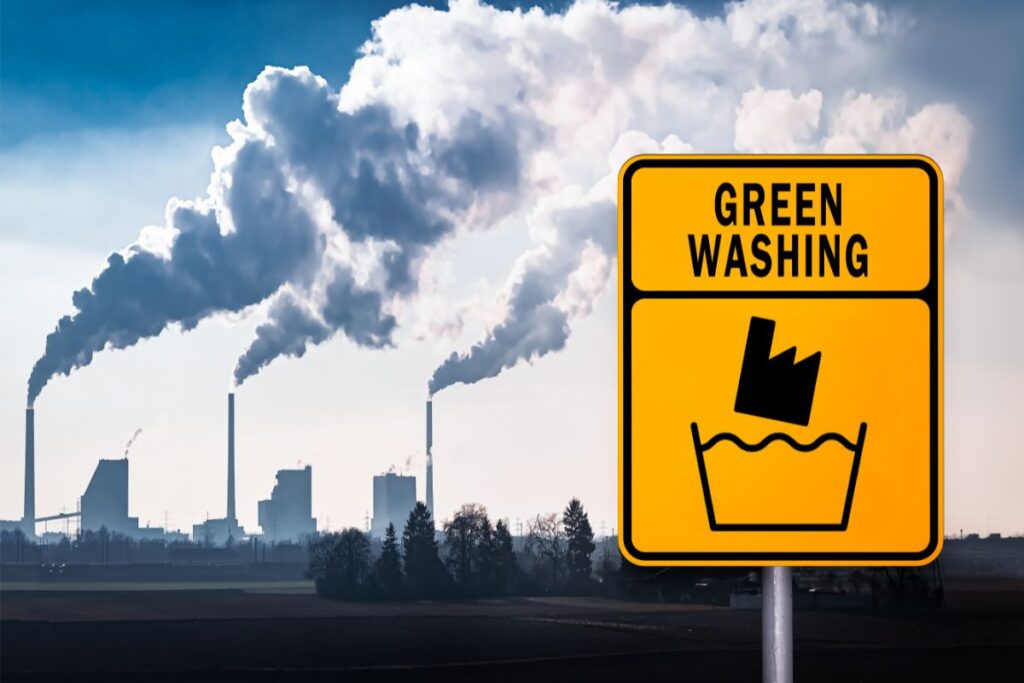
Greenwashing vs. Genuine Sustainability: How to Spot the Difference
The rise of environmental consciousness has transformed consumer behavior. Today, more and more people actively seek out brands that align with their values, particularly in terms of sustainability. This shift presents a significant opportunity for businesses, but it also creates a breeding ground for deceptive marketing tactics.
Enter greenwashing. This deceptive practice involves masking a company’s true environmental impact with misleading claims and eco-friendly imagery. Unfortunately, greenwashing makes it difficult for consumers to make informed purchasing decisions.
This blog post aims to empower you, the conscious consumer, by equipping you with the knowledge to differentiate between genuine sustainability efforts and mere greenwashing tactics.
The Red Flags of Greenwashing:

When bombarded with claims of “eco-friendly” products and services, it’s crucial to be wary of certain red flags. Here are some key indicators that a brand might be resorting to greenwashing:
- Vague or Misleading Language: Terms like “natural” or “eco-friendly” are often thrown around without clear definitions. Look for specifics. Reputable brands will back up their claims with concrete data or certifications from recognized sustainability organizations.
- Irrelevant Claims: A company might promote being “cruelty-free” for a product category that never involved animal testing in the first place. Always consider if the claim directly relates to the product’s environmental impact.
- Hidden Trade-offs: A product might be made from “recycled plastic” but still contribute to overall plastic pollution. Think holistically about the product’s life cycle, from sourcing raw materials to disposal.
- Focus on Imagery: Breathtaking landscapes or pictures of leaves plastered on packaging don’t necessarily translate to genuine sustainability practices. Dig deeper for concrete information on the company’s environmental initiatives.
- Lack of Transparency: Companies with genuine sustainability efforts are typically eager to share details about their practices, certifications, and goals. Be wary of brands that make ambiguous claims without readily available supporting evidence.
Identifying the Hallmarks of Genuine Sustainability:
Fortunately, there are ways to identify brands that truly prioritize environmental responsibility. Here’s what to look for:
- Transparency is Key: Look for companies that publish comprehensive sustainability reports outlining their environmental and social impact. These reports should detail their progress toward established goals and highlight ongoing initiatives.
- Third-Party Certifications: Certifications from reputable organizations like LEED (Leadership in Energy and Environmental Design) or Fairtrade provide independent verification of a company’s commitment to environmental and social responsibility.
- Measurable Goals & Clear Actions: Genuine sustainability involves setting concrete goals for reducing waste, lowering emissions, or increasing renewable energy use. Companies should also detail the specific actions they’re taking to achieve these goals. This demonstrates a commitment to measurable progress.
- Life Cycle Assessment: Responsible brands consider the environmental impact of their products throughout their entire life cycle. This includes everything from the extraction of raw materials to manufacturing, transportation, use, and end-of-life disposal. Opt for companies that demonstrate a commitment to minimizing environmental impact across all stages.
- Holistic Approach: True sustainability goes beyond just the environment. Look for companies that promote fair labor practices, ethical sourcing of materials, and community engagement. A holistic approach to sustainability demonstrates a commitment to long-term positive impact.
Empowering Yourself as a Conscious Consumer:
By educating yourself about greenwashing tactics and actively seeking out brands with verifiable sustainability practices, you can make purchasing decisions that align with your values. Here are some additional ways to empower yourself:
- Do your research: Don’t take claims at face value. Investigate a brand’s sustainability efforts before you buy. Look for reviews from credible sources and check their website for detailed information about their practices.
- Support Brands with a Proven Track Record: Look for brands with a long-standing commitment to sustainability and a history of positive environmental impact. These companies are more likely to be genuinely invested in long-term change.
- Ask Questions: Don’t hesitate to reach out to a company directly to inquire about their sustainability practices. Their willingness to answer your questions and provide detailed information can be a good indicator of their commitment.
By being a discerning consumer, you can hold companies accountable and encourage them to prioritize genuine sustainability practices. Together, we can promote a marketplace that rewards responsible businesses and contributes to a healthier planet for all.

Prachi, an accomplished Chief-Editor at The Sustainable Brands Journal, has 15+ years of experience in Europe, the Middle East, and India, managing 90+ global sustainable brands. She’s a prolific writer in sustainability, contributing to various publications. Prachi’s unwavering passion and expertise make her a recognized authority, driving positive change and inspiring a sustainable future.





